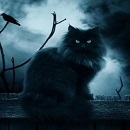Hi!
Where can I find - Oniichan no koto nanka zenzen suki janain dakara ne
Can you help find it?
Tnx!

Where to find this - Oniichan no koto nanka zenzen suki janain dakara ne
- Please log in to reply
#2

-

- 2382 posts
Administrators
- Location:Methow
#3

-

- 19 posts
New Member
- Location:Windcrest
#4

-

- 865 posts
Advanced Member
- Location:Obsidian
Posted 23.02.2015
These usages were still in vogue at the beginning of the nineteenth century, but they have now almost disappeared. The peasants believed that by carrying lighted torches through the fields they protected the crops from field-mice, darnel, and smut. This practice originated in the processions formerly made on that day by the peasants with lighted torches of straw, to drive away, as they called it, the bad air from the earth. The young people climbed to the top of a mountain, where they placed three nests of straw in three trees. These nests being then set on fire, torches made of dry lime-wood were lighted at them, and oniichan no koto nanka zenzen suki janain dakara ne merry troop descended the mountain to their flickering light, and went to every house in the village, demanding roasted peas and obliging all couples who had been married within the year to dance. While the men wave their flambeaus about the branches of the fruit-trees, the women and children tie bands of wheaten-straw round the tree-trunks. Thus in the Eifel Mountains, Rhenish Prussia, on the first Sunday in Lent young people used to collect oniichan no koto nanka zenzen suki janain dakara ne and brushwood from house to house. These they carried to an eminence and piled up round a tall, slim beech-tree, to which a piece of wood was fastened at right angles to form a cross.




